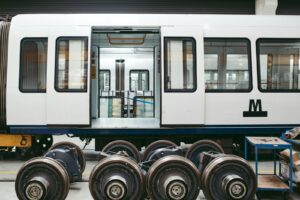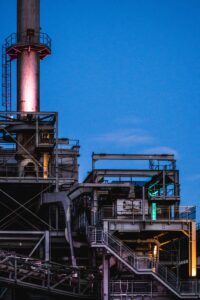The Role of Machine Learning in Predictive Maintenance with IoT
Leveraging Machine Learning for Accurate Predictive Maintenance in IoT Systems
Machine learning in predictive maintenance with IoT is transforming how cities like Riyadh and Dubai manage their infrastructure, significantly improving the accuracy of maintenance predictions and reducing operational disruptions. By integrating machine learning algorithms with IoT data, these cities can anticipate equipment failures before they occur, optimizing maintenance schedules and minimizing costly downtimes. This proactive approach is particularly crucial in urban environments where maintaining the continuous operation of public services is essential for daily life and business continuity.
In Dubai, for example, the implementation of IoT devices across critical infrastructure, such as transportation networks and utility grids, generates vast amounts of data. Machine learning algorithms analyze this data to identify patterns and anomalies that may indicate impending failures. For instance, if IoT sensors on Dubai’s metro system detect unusual vibrations or temperature fluctuations, machine learning models can predict potential issues with the train’s components, prompting maintenance teams to take action before a breakdown occurs. This not only ensures the reliability of public transportation but also enhances passenger safety and satisfaction.
Riyadh is also leveraging machine learning in predictive maintenance to support its Vision 2030 objectives, focusing on sustainability and smart city development. By deploying IoT sensors across public facilities, from streetlights to water management systems, the city collects real-time data that feeds into machine learning algorithms. These algorithms use historical data to refine their predictions, continuously improving their accuracy over time. As a result, Riyadh can optimize resource allocation, extend the lifespan of its infrastructure, and provide uninterrupted services to its residents, all while reducing the environmental impact of unnecessary maintenance activities.
Improving Efficiency and Reducing Costs through Predictive Maintenance
One of the most significant advantages of using machine learning in predictive maintenance with IoT is the ability to improve operational efficiency and reduce maintenance costs. Traditional maintenance strategies often rely on reactive approaches, where repairs are made after a failure occurs, or on scheduled maintenance, which may result in unnecessary service interruptions. Predictive maintenance, powered by machine learning, shifts the focus to a more proactive model, where maintenance is performed based on the actual condition of the equipment.
In Saudi Arabia, cities like Riyadh are experiencing rapid growth, which increases the demand for efficient public services. By integrating machine learning with IoT, the city can predict when critical infrastructure components, such as power lines or water pipes, are likely to fail. This allows maintenance teams to intervene before issues become severe, preventing service disruptions and reducing the costs associated with emergency repairs. For instance, IoT sensors on water distribution networks can detect leaks early, and machine learning models can assess the severity and location of the leaks, enabling targeted repairs that conserve water and minimize waste.
Dubai’s smart city initiatives also showcase the cost-saving potential of predictive maintenance. By using machine learning to analyze data from IoT-enabled building management systems, the city can predict when HVAC systems, elevators, or lighting fixtures require maintenance. This approach not only extends the lifespan of building assets but also reduces energy consumption, aligning with Dubai’s sustainability goals. Moreover, the ability to predict maintenance needs accurately allows facility managers to plan resources more effectively, reducing the financial burden of unplanned downtimes.
Enhancing Public Safety and Service Reliability with Smart Maintenance Solutions
The integration of machine learning in predictive maintenance with IoT plays a crucial role in enhancing public safety and the reliability of essential services in smart cities. By predicting and preventing equipment failures, cities can ensure that critical infrastructure, such as traffic lights, public transportation, and emergency response systems, remains operational. This is particularly important in urban environments where any disruption can have significant consequences for residents and businesses.
In Dubai, machine learning algorithms are used to enhance the predictive maintenance of the city’s extensive network of streetlights. IoT sensors monitor the performance of each light, collecting data on factors such as power consumption, light intensity, and operational status. Machine learning models analyze this data to identify lights that are at risk of failure, allowing maintenance teams to replace or repair components before the lights go out. This proactive approach ensures that streets remain well-lit and safe for pedestrians and drivers, contributing to the overall security of the city.
Riyadh is also leveraging predictive maintenance to improve the reliability of its public safety infrastructure. By using IoT sensors and machine learning, the city can monitor the condition of fire hydrants, surveillance cameras, and other critical assets. Predictive maintenance models help identify when these assets require servicing, ensuring that they are always ready to perform in emergencies. This not only enhances the effectiveness of public safety measures but also supports Riyadh’s broader goals of building a resilient and secure urban environment.
Implementing Machine Learning in Predictive Maintenance for Smart City Success
Developing a Strategic Framework for Machine Learning Integration
To fully realize the benefits of machine learning in predictive maintenance with IoT, cities in Saudi Arabia, the UAE, and other forward-thinking regions must develop a strategic framework that guides the integration of these technologies. This framework should include a comprehensive assessment of existing infrastructure, the identification of key areas where machine learning can add value, and the establishment of partnerships with technology providers specializing in IoT and predictive analytics.
In Riyadh, city planners are collaborating with leading tech companies to deploy IoT sensors across various public infrastructure components. By establishing a centralized data platform, the city can integrate information from multiple sources, allowing machine learning algorithms to deliver more accurate predictions. In Dubai, the approach is similar, with a focus on creating an interconnected network of IoT platforms that enhance the city’s ability to manage maintenance activities in real time. This strategic integration not only improves the reliability of urban services but also supports the city’s vision of becoming a global leader in smart city innovation.
Executive coaching services can also provide valuable support to city leaders and managers overseeing the implementation of machine learning in predictive maintenance. By offering insights into best practices, change management strategies, and the latest technological advancements, executive coaches can help guide organizations through the complexities of digital transformation, ensuring successful outcomes and sustained improvements in maintenance operations.
Ensuring Scalability and Interoperability of Predictive Maintenance Systems
Scalability and interoperability are critical considerations when implementing machine learning in predictive maintenance with IoT. As cities grow and technology evolves, predictive maintenance systems must be scalable to accommodate increased data volumes and flexible enough to integrate seamlessly with other urban technologies. This involves selecting scalable IoT platforms, investing in flexible infrastructure, and adopting open standards that facilitate interoperability.
For example, in Dubai’s predictive maintenance initiatives, scalable machine learning models are deployed to analyze data from a wide range of IoT devices, from smart meters to public transport sensors. By using cloud-based solutions, the city can easily expand its data processing capabilities to handle increased data volumes as more IoT devices are deployed. Similarly, in Riyadh, predictive maintenance systems are designed with interoperability in mind, allowing them to integrate with other smart city technologies, such as AI-driven traffic management and energy optimization systems.
Future-Proofing Predictive Maintenance Investments for Sustainable Urban Growth
To ensure the long-term success of machine learning in predictive maintenance with IoT, cities must adopt a proactive approach to future-proofing their investments. This includes continuous monitoring of technological advancements, regular updates to existing systems, and strategic investments in research and development. By staying ahead of emerging trends, cities in Saudi Arabia, the UAE, and other regions can maintain their leadership in smart city innovation and drive sustainable urban growth.
Leadership and project management are critical in guiding the future-proofing process. City executives must foster a culture of innovation, prioritize ongoing training, and encourage cross-functional collaboration. By building a resilient and adaptable predictive maintenance infrastructure, cities can navigate the complexities of a rapidly changing digital landscape and capitalize on the opportunities that machine learning and IoT solutions offer.
In conclusion, machine learning in predictive maintenance with IoT provides cities with the tools to enhance the accuracy of maintenance predictions, improve operational efficiency, and promote sustainability. By implementing these solutions strategically, ensuring scalability and interoperability, and future-proofing their investments, cities in Saudi Arabia, the UAE, and beyond can unlock the full potential of predictive maintenance and achieve their smart city goals.
—
#MachineLearning #PredictiveMaintenance #IoT #SmartCities #DigitalTransformation #SaudiArabia #UAE #UrbanInnovation #SmartInfrastructure #AIPredictiveMaintenance #ProjectManagement












